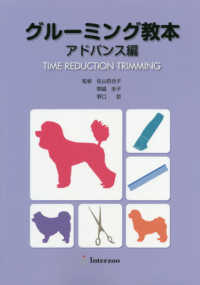- ホーム
- > 洋書
- > フランス書
- > ARTS ET BEAUX LIVRES
- > Beaux livres illustres (histoire, nature, mode, transports…)
基本説明
Ce catalogue accompagne l'exposition "Kharmohra" qui se tiendra au Mucem à compter du 21 novembre 2019. L'Afghanistan vit depuis quarante ans au rythme des guerres, des destructions du patrimoine, des attentats, des migrations. Depuis quelques années, des programmes internationaux pour la création ont été mis en place et de jeunes artistes afghans sont rentrés de leur exil. Autodidactes ou formés dans des pays de migrations, ces artistes semblent être au seuil de tous les possibles, sans héritage à assumer, ni classicisme avec lequel rompre. Cet ouvrage donne à voir cette création contemporaine. Il explore une grande variété de formes et de supports pour exprimer l'horreur des attentats et l'omniprésence de la mort dans un espace urbain devenu hostile.
Full Description
For forty years, life in Afghanistan has been shaped by wars, the destruction of heritage, terrorist attacks, everyday fears and hopes, and migrations. In 2001, the Taliban government was overthrown by an international coalition bringing hopes of stability and reconstruction. The intervention did not however bring total peace. In this period of optimism, a number of international creation programs were set up as young Afghan artists returned from exile. Artists in the country - either self-taught having grown up under a Taliban regime that banned images, or trained during their exile - had no heritage to take on and no classical rules to break: anything seemed possible.
Kharmohra is named after a gland taken from a donkey's neck that, on drying, becomes as hard as stone and is said to bring happiness by making the owner's most secret dreams come true. The metaphor is used to show how contemporary Afghan art is a long way from the romantic expectations with which Westerners often approach the country.
The artists explore a wide variety of forms and media to express the horror of terrorism and the omnipresent shadow of death looming over the hostile urban environment.
The works stand as an often humorous testimony to the peace that was promised but never delivered and the bitter illusions this fostered. All express a spirit of revolt against the most oppressive traditional forces that repress women and homosexuals as well as the Hazara ethnic group. Through their artistic practices, the artists show how salvation, however slight, is achievable.







